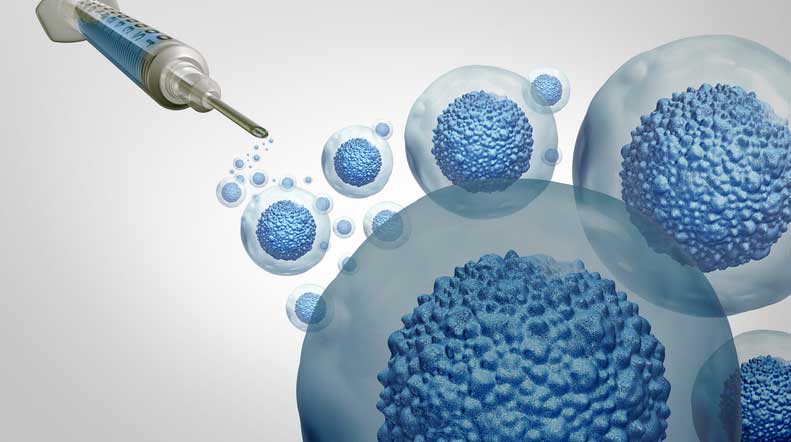Stem cell therapy has a unique ability to slow the development of Amyotrophic Lateral Sclerosis (ALS). This happens because stem cells have the ability to differentiate into distinct types of supportive cells like the astrocytes and microglia – cells found in the central nervous system. These regenerated supportive cells typically have the ability to slow the degeneration of motor neurons within the Central Nervous System.

What is ALS?
Amyotrophic Lateral Sclerosis (ALS) is a relatively complicated disease to comprehend and treat. It affects approximately one to two per 100,000 people in the United States every year. Major symptoms of ALS include difficulty in speaking, moving, and breathing; muscle cramps and stiffness, and slurred speech.
About 95% of ALS cases are triggered by unknown factors, with just the remaining 5% being genetically inherited. Although ALS typically shows up around age 50-60, it can affect people of any age.
While there is no existing cure for Amyotrophic Lateral Sclerosis (ALS), recent advances in stem cell technology have shown us new tools that can be used to fight ALS, and provide a possible new treatment for people living with ALS. Stem cell therapy can delay the progression of this disease.
Stem cell therapy for ALS
Mesenchymal stem cell (MSC) therapy can be used as a strong therapeutic treatment for ALS and other Central Nervous System disorders. For emphasis, mesenchymal stem cells (MSCs) can exert their action while differentiating toward a precise cell type or via the discharging of different growth and trophic factors.
Different clinical models have proof that mesenchymal stem cells (MSCs) may be the answer to the treatment of ALS, because MSC transplantation may delay the disease onset and progression and therefore increase lifespan. Also, the loss of motor neurons can be reduced, which will mean a delay in the loss of motor function.
Stem cells can also implement a supportive role when it provides a nurturing and neuroprotective microenvironment that advances detrimental conditions for the diseased motor neurons. This will eventually ensure that there’s a slowing down of neurodegeneration and neuronal death.

Also, transplanted stem cells here will secrete neurotrophic factors, differentiate into non-diseased, non-neuronal cells, such as microglia and astrocytes, or into modulatory neurons that synapse with diseased motor neurons. These are part of what make up the potential of using stem cells to treat ALS.
There may be no existing cure for ALS yet, but stem cell therapy is truly an attractive approach for ALS because it tackles the intricate disease development through numerous approaches.
The basis of stem cell therapy for ALS is largely about improving the diseased microenvironment. Transplanted stem cells will usually produce neurotrophic factors, differentiate into the supportive cells, and generate a neuroprotective setting that can slow down the degeneration of motor neurons.
Need stem cell therapy in Phoenix, AZ? Reach out to us today to book your consultation spot!

Dr. David Greene
MD, PhD, MBA
Dr. David Greene, MD, PhD, MBA, is a pioneering leader in regenerative medicine and healthcare marketing. As a residency and fellowship-trained orthopedic surgeon, Dr. Greene transitioned from clinical practice to become the founder and CEO of R3 Stem Cell and US Lead Network, where he has revolutionized patient care and medical practice growth through innovative therapies and digital marketing strategies. He has authored two influential books on healthcare internet marketing, ranks among the top expert authors globally, and has been featured on the cover of Corporate Vision magazine for his impact on global regenerative therapies. Beyond his professional achievements, Dr. Greene is passionate about education, compassion, and continuous innovation.

Sorry, the comment form is closed at this time.